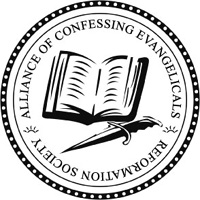Atoning Blood 2
By Philip Graham Ryken
The Centrality of the Atonement
Doubtless Tyndale would be pleased to know that today the primary meaning of “atonement” in the English dictionary is “the reconciliation of God and man through the sacrificial death of Jesus Christ.”[1] But he would be much less pleased to know how unpopular atonement has become. Doubtless this is because it deals with too many subjects that most people would rather ignore, like the wrath and curse of God, the punishment of sin, and the old, blood-stained cross.
As the Dutch theologian G. C. Berkouwer once explained, “Terms common to jurisprudence have been used in connection with Christ’s death: satisfaction, sufficiency, payment, purchase, ransom, and punishment. And these terms have made men angry.”[2]
What makes people so reluctant to embrace the death of Jesus as the atonement for their sins? Most unbelievers do not see their need for atonement. “Why would anyone else have to die for my sins?” they ask. For their part, many Christians do not understand the meaning of the atonement. The notion of a blood sacrifice for sin sounds primitive, perhaps even barbaric. As a result, the cruciality of the cross has all but disappeared from contemporary theology.
One notable example of the many recent attacks on the doctrine of the atonement is an anthology entitled Stricken by God? Nonviolent Identification and the Victory of Christ. By and large, the contributors—all of them theologians in the church—do not believe that the cross of Christ saves us through the punishment of sin or the satisfaction of the wrath of God. According to the editors, what we need instead is “to construct a new paradigm of the atonement in the 21st century; the sacrificial model is flawed.”[3]
Fundamental to this new paradigm is the conviction, which the editors identify as a core belief, that “on the Cross, God was not punishing Jesus.”[4] To believe otherwise, they say, is the moral equivalent of the mass murderer who slaughtered Amish children at a Pennsylvania schoolhouse.[5]
The orthodox doctrine of the atonement has not always been treated this way. Back in the nineteenth century, in his definitive work on the subject, the great Scottish theologian George Smeaton identified the atonement as “the central truth of Christianity, and the great theme of Scripture.”[6] Another Scottish divine wrote,
Let a man preach with the greatest ability and zeal everything in the Bible but the Cross, he shall, as to the great end of preaching, preach in vain. . . . The doctrine of the atonement ought not to be the sole theme of the Christian ministry, but every doctrine, and every precept, of Christianity should be exhibited in their connection with this great master principle; and the leading object of the preacher should be to keep the mind and the heart of his hearers steadily fixed on Christ Jesus—Christ Jesus crucified.[7]
[1] Webster’s Ninth New Collegiate Dictionary (New York: Merriam-Webster, 1984), 113.
[2] G. C. Berkouwer, Faith and Justification (Grand Rapids, MI: Eerdmans, 1954), 90.
[3] Brad Jersak and Michael Hardin, eds., Stricken by God? Nonviolent Identification and the Victory of Christ (Grand Rapids, MI: Eerdmans, 2007), 14.
[4] Jersak, in Stricken by God?, 31.
[5] Hardin, in Stricken by God?, 55.
[6] George Smeaton, Christ’s Doctrine of the Atonement (Edinburgh, 1870; repr. Edinburgh: Banner of Truth, 1991), 1.
[7] John Brown, An Exposition of the Epistle of Paul the Apostle to the Galatians (Edinburgh, 1853; repr. Evansville, IN: Sovereign Grace Book Club, 1957), 370.






















